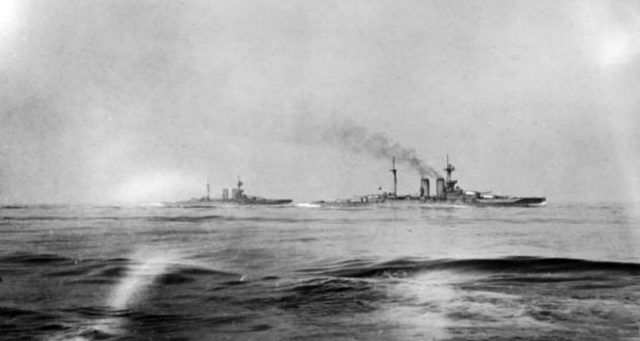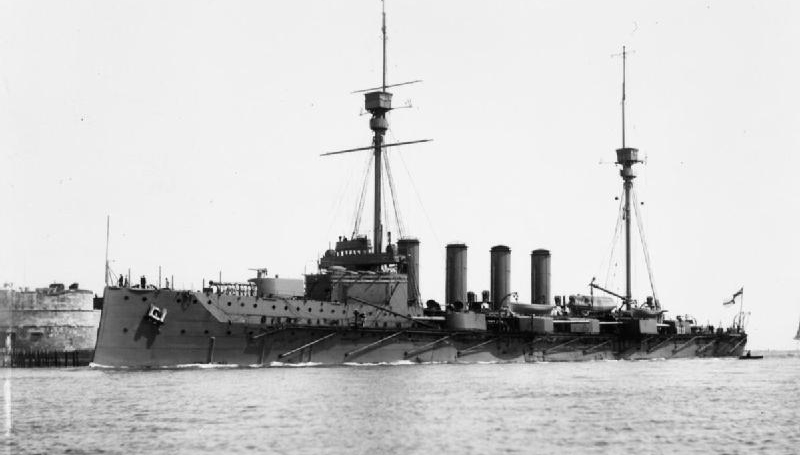The previous head of the Royal Navy has appealed to the Ministry of Defence to curtail illicit metal scavenging from sunken battleships amid claims that more than half of the war graves from one of the First World War’s largest naval battles have been stolen.
Lord Boyce, a previous admiral of the fleet and chief of the British armed forces, told the Guardian the practice was vandalism and was similar to stealing grave markers from a military cemetery.
He spoke out as the last missing ship from the Battle of Jutland – which took the lives of 8,645 British and German sailors in 36 hours of fighting off the Danish coast in June 1916 – was for now untouched almost a century after it was destroyed by German shelling.
Boyce’s grandfather Albert Boyce, a Navy petty officer, was aboard the armored cruiser HMS Warrior as it sunk in what some naval historians think is the biggest sea confrontation in history. Germany aspired to terminate British control over the North Sea, which curtailed its trade.
Petty Officer Boyce survived, but 71 of his crewmates died. One shell alone took 40 lives, while ships’ doctors could not manage with the number of people who required amputations, with many men passing away as they awaited treatment, according to survivors’ accounts.
A shell passed through the upper deck and killed three of my mates working with me – another man had his leg shorn off, recalled Stoker 1st Class David Williams. He got hit himself, he explained. The sick berth steward tried to apply a bandage and as he did another shell came and took off his two middle fingers.

Dr Innes McCartney, a marine archaeologist who with other wreck hunters found the HMS Warrior upside down almost 100 metres beneath the North Sea, said that regardless of their status as war graves, 16 of the other 24 British and German sunken ships he has seen from the crucial battle have already been pillaged for items, including large bronze propellers and boiler condensers that when melted down can each be valued at as much as £65,000.
He said that he had seen obvious signs of looting on the HMS Queen Mary that has the remains of 1,266 sailors.
The damage inflicted on the wreck was seen by us in 2014, he said. Where once the stern of the ship was in place, it has now been forcibly opened to take the condensers from the ship.
New footage of the ship illustrates it has lain peacefully for the last century except for masses of cod swimming around its inverted hull. Huge propellers are observable in addition to the bases of numerous gun turrets.
Commercial metal salvage companies are believed to have been in the North Sea battlefield in recent years without being investigated by British authorities even though the wrecks are covered by the Protection of Military Remains Act 1986, which makes it unlawful for Britons to disturb them. Under sovereign immunity that could permit overseas prosecutions.
McCartney said scavenger ships were known to lower five-tonne chisels to penetrate wrecks, which could also contain human remains, prior to using mechanical grabs to take parts from the deep, then taking them onto land and melting them down.
The MoD should chase these things down, said Lord Boyce. When he was involved in the MoD, he took grave looting quite earnestly, and he believes that criminals should be chased to discourage others. When an underwater grave site is found, such as HMS Warrior, and it is accorded respect, it is good for navy people today to recognize that one day they will be noted if your boat is located and is being valued as a grave.
He knows of families, and this is something he has done, who have passed over a grave and dropped a wreath. A person can come to some degree of closure.
“It’s wonderful that the wreck has been found,” added Andrew Biggs, a veteran in Devon whose grandfather, Vincent Barkly Molteno was captain of HMS Warrior. “There is a great deal of effort to keep it as it is, as many of these ships have been invaded. Those are war graves. They should be left in peace to show respect.”
McCartney, who discovered HMS Warrior midway between Scotland and Norway on 24 August with co-workers from the Sea War Museum in Jutland and JD-Contractor, a marine exploration company, said additional wrecks had already been “scavenged by metal thieves. HMS Warrior was still untouched, he said, but this is the final chance the Ministry of Defence has to safeguard a war grave from the Battle of Jutland, The Guardian reported.
A MoD spokesman said: “The United Kingdom strongly condemns the defilement of any site of maritime military remains. We try to guard these important sites, and any illegal action should be reported to the police at the Ministry of Defence. They are not aware of any illegal salvage activity taking place at other Jutland wreck locations.”
The day following the sinking of the HMS Warrior, Captain Molteno wrote to Albert Boyce and each of the other survivors, admiring their bravery.
“We have just witnessed an event that has never been known during English history,” he said, according to a duplicate of the letter kept by Lord Boyce.
He was proud to lead such a large body of men, he wrote. He applied to the Admiralty to keep them together and have him in command.
He also asked for leave for all of the men so they could go home and see their friends and they can be cock-a-chest so each man will get at least ten days. “Your bravery was outstanding. Not one serviceman had any thought for himself, but everyone endeavored to save the ship and give aid to the wounded and dying.”
He would not have believed it would be achievable to get a ship into such a hell and return again with so many survivors. “We have the pleasure of knowing that we destroyed a large German cruiser before we were disabled,” he said. “Don’t forget that we were under fire for approximately 17 and a half minutes before from nine of their newest ships before withdrawing from the battle.”
